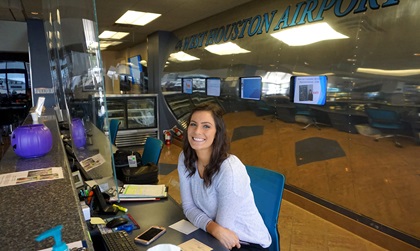Texas airport celebrates 1960s with $10 an hour IFR training
West Houston Airport’s Winter IFR Special ‘makes pilots safer’
West Houston Airport is luring aircraft owners based at the airport back to the classroom for instrument training at $10 per hour, a fee that harkens back to the 1960s general aviation boom and the beginning of airport manager Woody Lesikar’s own aviation career.
“Honestly, it’s a good deal and I hope a lot of people take advantage of it,” said the airline transport pilot and CFII. “I really think an instrument rating makes pilots safer and insurance companies agree with that, too.” Lesikar observed that instrument-rated pilots are “usually more precise” than VFR pilots because of the concentrated instrument instruction they’ve received.
“We’re trying to make as safe a pilot as we can at our airport,” said Lesikar. “The trick is for them to make the time to do the training and earn that instrument rating.”
In 1966, the 20-year-old Lesikar landed a flight instruction job at the airfield then known as Lakeside Airport. In short order he saved up $6,700 to purchase a two-seat Alon Aircoupe A2 “from a cropduster to keep the flight school going.” Then he applied to Cessna Aircraft for a dealership loan and received a $25,000 line of credit “that put us on the map.” He soon found himself running a brisk flight training operation with several Cessnas during the heyday of GA.
Lesikar’s role expanded into managerial positions as the 1970s gave way to the 1980s and beyond. His responsibilities through the years included overseeing 30 aircraft, veteran-approved flight training, an avionics shop, hangars, and additional facilities. He credits his and the airfield’s success to “Cessna and a lot of good people who helped along the way.”

The privately owned public-use West Houston Airport operates underneath Class B airspace surrounding George Bush Intercontinental/Houston Airport and William P. Hobby Airport. The reliever airfield celebrated its fiftieth birthday in 2012, and Lesikar counts 400 based aircraft with about 150,000 annual flight operations.
He said the “fuel prices are reasonable, there’s a free continental breakfast each morning, and we enjoy just sitting around and talking about airplanes and about flying. I’ve had the airport since the 1970s and we’ve done a winter deal every year, but not with prices this low. This is the best one yet.”




